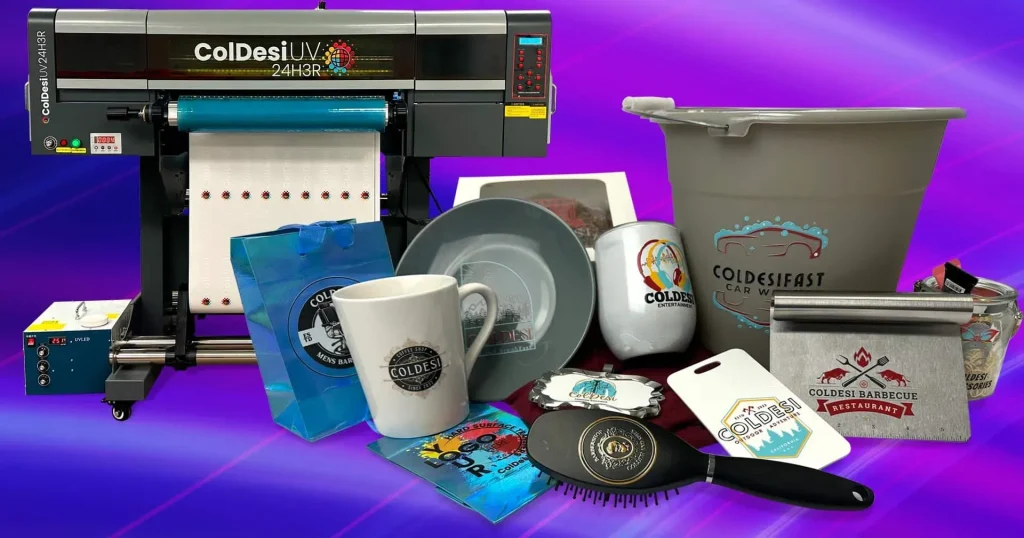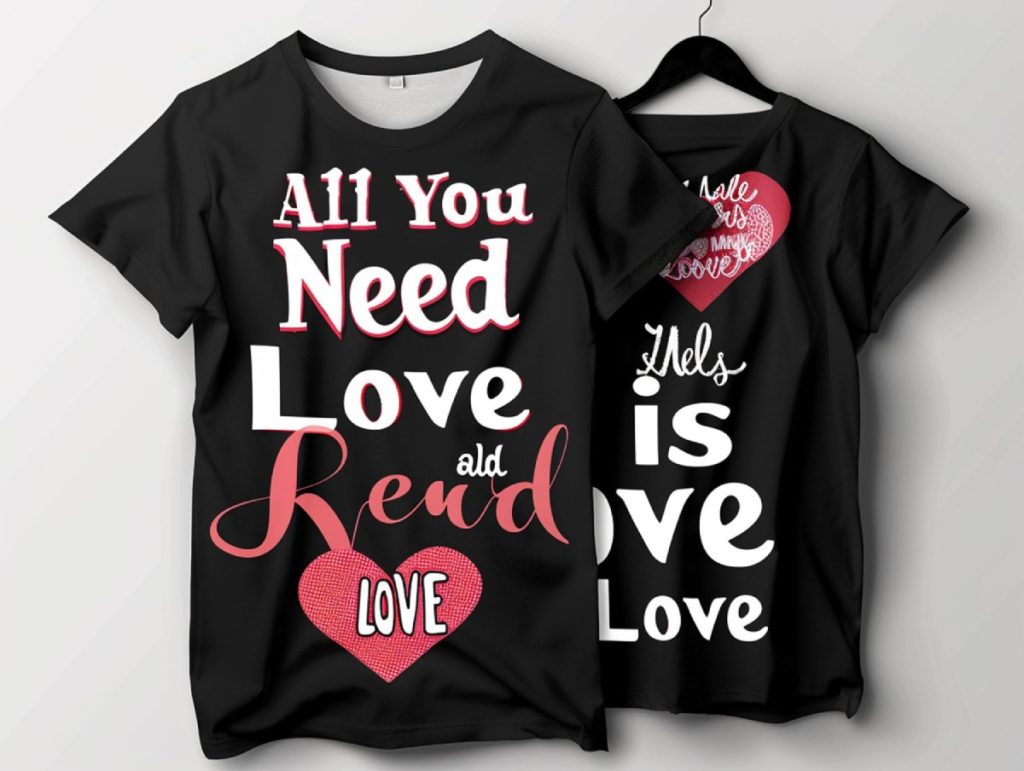UV DTF printing, or ultraviolet direct to film printing, is revolutionizing the printing landscape with its innovative approach. This cutting-edge technique fuses the efficiency of DTF technology with the vibrant, high-quality colors of UV printing, making it a sought-after choice for businesses. With advancements in printing technology, UV DTF allows for the creation of durable, eco-friendly prints that hold up even under wear and tear. As consumer demand for customized and high-resolution prints continues to rise, UV DTF printing stands out as a key player. Businesses leveraging this technology not only enhance their product offerings but also cater to an increasingly eco-conscious market.
Exploring different facets of modern print methods, ultraviolet direct to film printing has gained traction as a versatile solution for various applications. Often referred to as DTF printing due to its unique film transfer technique, this approach utilizes ultraviolet inks that cure instantly, allowing for stunning, high-definition imagery. As industries seek eco-friendly alternatives to traditional printing, technologies like UV printing are paving the way forward. This method not only improves print quality but also aligns with the growing demand for sustainable practices in production. In an environment where printing technology advancements are crucial, embracing forms of DTF printing can significantly elevate a brand’s identity and offerings.
Understanding the Basics of UV DTF Printing
UV DTF printing stands out as a revolutionary method that bridges the benefits of ultraviolet (UV) printing and Direct to Film (DTF) technology. At its core, this method employs UV-cured inks to produce vibrant, precise prints on a plethora of substrates. Unlike traditional printing methods, UV DTF ensures that the colors remain truly eye-catching and long-lasting, making it an ideal choice for businesses keen on high-quality visual representation.
In essence, when a design is printed using UV DTF, it undergoes instant curing under UV light. This innovative process not only enhances the print quality but also allows for finer detail and more intricate designs, crucial for effective branding. The ability to print on different materials—from fabrics to metals—offers businesses unprecedented versatility in their product offerings.
Advantages of Utilizing UV Printing Techniques
One of the primary advantages of UV printing techniques, particularly UV DTF, is the unmatched print quality it delivers. The inks used are designed to resist fading and bleeding, which is a common issue with conventional printing. This capability allows brands to maintain consistency and vibrancy in their marketing materials and products, leading to a stronger brand presence in the market.
Furthermore, UV DTF printing elevates the overall efficiency of the printing process. Since the prints cure instantly, businesses can dramatically reduce turnaround times, enabling them to meet tight deadlines without compromising on quality. This efficiency is essential when catering to the quickly changing demands of today’s consumers, particularly in fast-paced industries.
Eco-Friendly Attributes of UV DTF Printing
In a world increasingly concerned with environmental sustainability, UV DTF printing emerges as a front-runner in eco-friendly printing solutions. The inks used in this technology typically contain fewer volatile organic compounds (VOCs), which means they are less harmful to the environment compared to many traditional printing options.
Companies focused on reducing their ecological footprint can benefit from adopting UV DTF methods. By choosing UV DTF printing, businesses not only align with consumer preferences for sustainable practices but also reinforce their commitment to protecting the planet, proving that quality and sustainability can go hand in hand.
Challenges Faced When Adopting UV DTF Technology
Despite its myriad advantages, companies looking to implement UV DTF printing must navigate certain challenges. One of the main obstacles is the initial investment in specialized equipment and inks. While these advanced technologies promise significant returns in the long run, the upfront costs can be daunting for smaller businesses.
Additionally, the complexity of operating UV DTF printers might require extensive training for staff. Transitioning from traditional printing methods to advanced UV DTF technology can be a steep learning curve, necessitating both time and financial resources to adequately train personnel and ensure a smooth operational shift.
Market Trends Influencing UV DTF Printing Adoption
The printing industry is witnessing a dynamic shift with the continuous rise of UV printing technologies. Increased demand for high-quality prints has propelled the UV DTF market, prompting businesses to adopt these innovative methods. Player companies are recognizing the need to offer bespoke solutions that can swiftly adapt to customer needs, a trend largely driven by personalization in consumer products.
Moreover, as technology advances, the capabilities associated with UV DTF printing are likely to expand. Businesses that stay ahead of such trends and integrate advanced printing solutions will not only meet current customer demands but also anticipate future market shifts, positioning themselves as leaders in the competitive printing landscape.
Exploring Practical Applications of UV DTF Printing
The versatility of UV DTF printing opens the door to a variety of practical applications across multiple industries. The ability to produce customized apparel with distinct graphics makes this technique particularly appealing to fashion designers and retailers looking to stand out. Whether it’s sports jerseys with intricate logos or personalized fashion items, UV DTF delivers top-notch quality tailored to individual brand identities.
Beyond apparel, UV DTF printing is making waves in the production of promotional products. Items like mugs, tote bags, and device cases can be adorned with vibrant, long-lasting imagery that effectively communicates brand messages. This adaptability not only enhances product offerings but also maximizes marketing opportunities for businesses eager to make a lasting impression on consumers.
Frequently Asked Questions
What is UV DTF printing and how does it work?
UV DTF printing, or Ultraviolet Direct to Film printing, is a state-of-the-art technique combining UV printing and DTF technology. It uses UV-cured inks that instantly dry upon exposure to UV light, allowing businesses to produce vibrant, high-quality prints on various substrates. This method involves transferring ink from a film onto surfaces, making it ideal for detailed and durable designs.
What are the benefits of choosing UV DTF printing for my business?
Choosing UV DTF printing offers numerous benefits, including exceptional print quality, versatility across multiple materials, and eco-friendly aspects due to low VOCs in UV inks. This technology allows for quick turnaround times, enabling businesses to meet urgent production demands while maintaining high-quality standards in their products.
How does UV DTF printing compare to traditional printing methods?
UV DTF printing stands out from traditional methods by providing instant curing of inks, resulting in better color fidelity and durability. Unlike solvent-based inks, UV inks emit fewer harmful substances, making UV DTF a more eco-friendly printing option. Additionally, its versatility allows for printing on a wider range of substrates.
Is UV DTF printing eco-friendly?
Yes, UV DTF printing is considered eco-friendly due to its lower emissions of volatile organic compounds (VOCs) compared to traditional solvent-based inks. This aligns with growing consumer demand for sustainable printing solutions, making UV DTF an attractive choice for businesses focused on reducing their environmental impact.
What types of products can I create with UV DTF printing?
UV DTF printing is incredibly versatile, allowing you to easily create high-quality prints on a variety of products. Common applications include customized apparel, promotional merchandise, interior decor items like wall art and signage, as well as promotional gifts. This flexibility makes UV DTF a great option for businesses looking to diversify their offerings.
What are the initial costs associated with UV DTF printing?
The initial costs of UV DTF printing can be significant, as businesses need to invest in specialized equipment and inks. However, the potential for high-quality output and quick production times can lead to increased profitability. It’s important for companies to assess their budget and expected return on investment before transitioning to this advanced printing technology.
| Key Points | Details |
|---|---|
| Introduction | UV DTF printing combines ultraviolet printing and Direct to Film technology to create high-quality prints. |
| What is UV DTF Printing? | A method using UV-cured inks for vibrant designs on various substrates. |
| Print Quality | Instant UV curing ensures true colors without fading or bleeding, perfect for brands. |
| Versatility | Compatible with textiles, plastics, and metals, expanding product offerings for businesses. |
| Eco-Friendly | Reduced VOCs in UV inks make it a sustainable choice for eco-conscious consumers. |
| Efficiency | Immediate curing allows handling right after printing, reducing turnaround times. |
| Market Trends | The growth in UV printing technology positions businesses to meet increasing quality demands more rapidly. |
| Challenges | Initial investment in equipment and training required for new technology adoption. |
| Practical Applications | Includes customized apparel, promotional products, and decorative items. |
Summary
UV DTF printing is revolutionizing the printing industry by offering businesses a remarkable blend of quality, efficiency, and adaptability. This innovative technique allows for the production of high-resolution prints with vibrant colors on a range of materials, making it an ideal choice for custom apparel, promotional products, and home decor. As companies strive to meet the evolving demands of consumers for quality and eco-friendly solutions, UV DTF printing provides significant advantages, including reduced environmental impact and the ability to produce prints that resist fading and wear. With its ability to meet modern challenges, UV DTF printing not only enhances product offerings but also positions businesses at the forefront of printing technology advancements.



